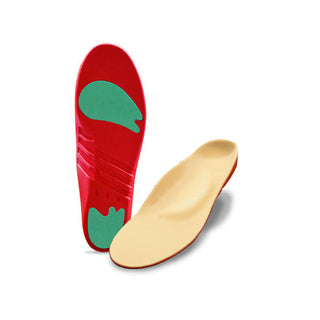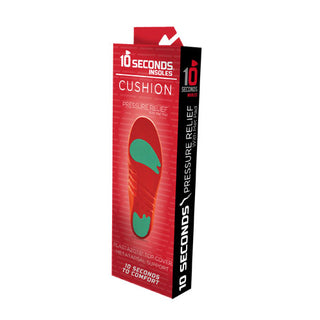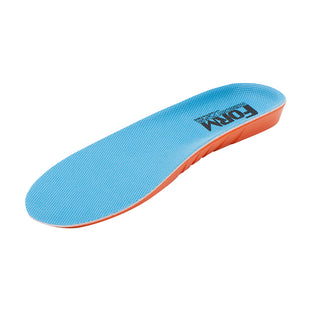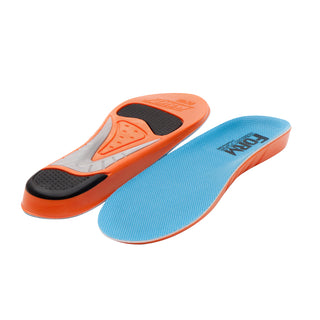Haglund's Deformity Symptoms and Relief
Recommended for Haglund's Deformity Symptoms and Relief
View allNoticing an enlarged bony bump on the back of your heel?
It could be a condition called Haglund’s Deformity.
Haglund’s Deformity is a painful condition caused by a bump on the back of the heel that can lead to irritation of the heel and bursitis. Read on to learn more about this condition, how it is diagnosed, and how to treat it.
What is Haglund’s Deformity
Haglund's Deformity, also known as "pump bump" or "Mulholland deformity," is a bony enlargement on the back of the heel.
This enlargement forms where the Achilles tendon attaches to the heel bone (calcaneus). The soft tissue near the Achilles tendon becomes irritated when the bony enlargement rubs against the shoes, leading to painful bursitis.
Haglund's Deformity is often seen with Achilles tendinitis and heel bursitis. It can lead to pain, swelling, redness, and increased pain when walking or wearing certain shoes.
Causes of Haglund’s Deformity
Several factors can contribute to the development of Haglund's Deformity, including:
- Genetics: The natural shape and structure of your foot may make you more prone to developing this condition. High arches, tight Achilles tendons, and a tendency to walk on the outside of the heel can increase risk.
- Ill-fitting shoes: Shoes with a rigid back, such as pumps or ice skates, can put pressure on the heel bone and irritate the bursa and Achilles tendon. This is why the condition is sometimes called "pump bump."
- Overuse: Repetitive actions and excessive walking, running, or jumping can strain the Achilles tendon and lead to Haglund's Deformity, especially in those with high arches or tight Achilles tendons.
- Age: This condition is most common in young adults, especially women.
Symptoms of Haglund’s Deformity
The primary symptom of Haglund's Deformity is a painful bump on the back of the heel, but others include:
- Pain and swelling in the area where the Achilles tendon attaches to the heel bone
- Redness near the inflamed tissue
- Increased pain when walking or wearing shoes, especially those with a rigid back
If the bursa becomes inflamed, you may also experience swelling, redness, and warmth around the affected area. Bursitis often occurs in conjunction with Haglund's Deformity.
It’s important to consult a medical professional for an accurate diagnosis.
Treatment for Haglund’s Deformity
Treatment for Haglund's Deformity usually starts with non-surgical methods, including:
- Apply an ice pack to the affected area for 20 minutes several times a day to reduce swelling.
- Over-the-counter nonsteroidal anti-inflammatory drugs (NSAIDs), such as ibuprofen, can help relieve pain and reduce inflammation.
- Stretching and strengthening exercises for the calf muscles can relieve tension on the Achilles tendon and help prevent recurrence.
- Wearing open-backed shoes, soft backs, or backless shoes can help avoid irritation. Using heel lifts or heel pads can also reduce pressure on the heel bone.
- Custom orthotic devices can help control foot motion and lessen pressure on the Achilles tendon.
If non-surgical treatments fail to provide relief, surgery may be necessary to remove the bony prominence and address any bursa or Achilles tendon issues.
Do Insoles Help With Haglund’s Deformity
Yes, insoles can be an effective part of treatment for Haglund's Deformity!
Properly designed insoles can:
- Help distribute body weight more evenly, reducing pressure on the heel bone.
- Provide cushioning through materials like gel or foam to help absorb shock and reduce stress on the heel.
- Arch support and heel stabilization features help control excessive foot motion that can strain the Achilles tendon.
- Prevent the foot from rubbing against the shoe, reducing irritation.
Combining insoles with other non-surgical treatments, such as wearing appropriate shoes, can effectively manage symptoms of Haglund's Deformity and prevent recurrence.
What to Look for in Insoles for Haglund’s Deformity
When selecting insoles for Haglund's Deformity, we recommend you look for the following:
- Deep heel cup: A deep, cushioned heel cup helps absorb shock, distribute pressure, and provide stability to the heel bone.
- Arch support: Proper arch support helps control excessive foot motion and reduces strain on the Achilles tendon.
- Cushioning: Insoles made with a high-quality cushioned material help absorb impact and reduce stress on the heel.
- Low-friction top cover: A top cover with a low-friction surface helps reduce irritation from the foot rubbing against the shoe.
- Proper fit: Make sure to choose insoles that fit well in your shoes and are appropriate for your foot type and activity level.
Consulting with a podiatrist or other foot health professional can help you select the best insoles for your specific needs and ensure proper fit and function.






